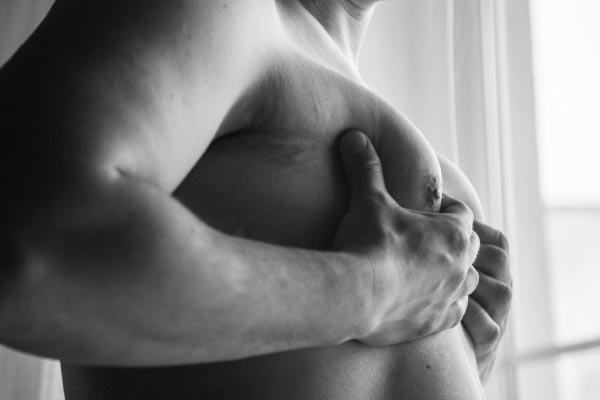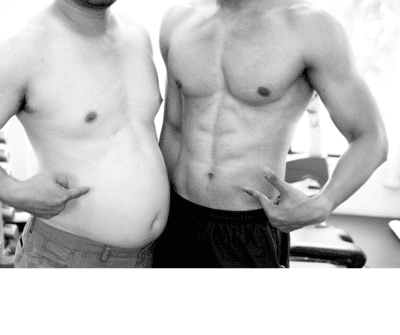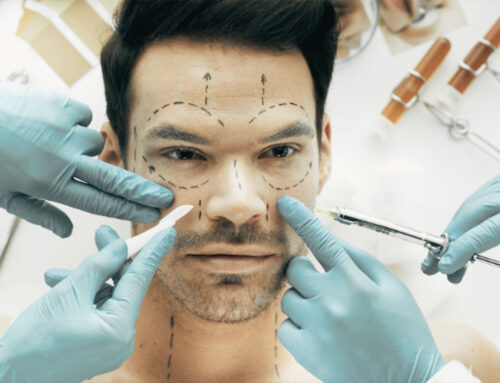Navigating the world of male chest concerns can be overwhelming, especially when trying to differentiate between gynecomastia and chest fat. This article aims to shed light on the differences between these two conditions, helping you identify the issue and make informed decisions about your care.
What is Gynecomastia?
Definition and Causes
Gynecomastia refers to the enlargement of breast tissue in males, often resulting in a more feminine or puffy appearance of the chest. This condition can be caused by hormonal imbalances, certain medications, or underlying health conditions such as liver disease, kidney failure, or thyroid disorders.
Symptoms and Identification
- Breast Enlargement: Noticeable increase in breast size, often with a rubbery or firm feel.
- Nipple Changes: Enlargement of the nipples or areolas, sometimes accompanied by tenderness or discomfort.
- Uneven Chest Appearance: Asymmetry between the two breasts, with one side potentially more affected than the other.
What is Chest Fat?

Definition and Causes
Chest fat, also known as pseudo gynecomastia, refers to the accumulation of fat deposits in the chest area. Unlike gynecomastia, chest fat is not the result of breast tissue enlargement but rather an increase in fat cells due to factors such as weight gain, genetics, or lifestyle habits.
Symptoms and Identification
- Soft Texture: The chest feels soft to the touch, without the firmness associated with breast tissue enlargement.
- Overall Weight Gain: Presence of excess fat not only in the chest area but also in other parts of the body.
- Lack of Nipple Changes: Nipples and areolas typically remain unchanged in size and shape.
Gynecomastia vs. Chest Fat: Key Differences
Physical Appearance
- Gynecomastia: Results in a more glandular, firm, or rubbery chest appearance.
- Chest Fat: Produces a softer, more uniform distribution of fat across the chest.
Underlying Causes
- Gynecomastia: Hormonal imbalances, medications, or health conditions.
- Chest Fat: Weight gain, genetics, or lifestyle factors like diet and exercise.
Treatment Approaches
- Gynecomastia: Often requires surgical intervention, such as liposuction or glandular tissue removal.
- Chest Fat: Can be addressed through lifestyle modifications, including diet and exercise, or non-surgical fat reduction treatments.
How to Know If You Have Gynecomastia or Fat

Self-Examination
Performing a self-examination can help you identify whether you have gynecomastia or chest fat. Look for the presence of breast tissue enlargement, changes in nipple size or shape, and the overall texture of your chest area.
Consultation with a Specialist
For a definitive diagnosis and personalized treatment recommendations, it’s essential to consult with a qualified plastic surgeon or healthcare provider. They can conduct a thorough evaluation, including physical examination and diagnostic tests if necessary, to determine the underlying cause of your chest concerns.
Gynecomastia vs. Normal Chest: When to Seek Medical Advice
Signs to Watch For
If you notice any significant changes in your chest appearance, such as sudden enlargement, asymmetry, or discomfort, it’s crucial to seek medical advice promptly. These changes may indicate an underlying health issue that requires timely intervention.
Importance of Early Detection
Early detection and diagnosis of gynecomastia or chest fat can lead to more effective treatment outcomes. By addressing the issue promptly, you can minimize potential complications and achieve optimal aesthetic results.
Six-Pack Surgery in Richmond Hill
Treatment Options for Gynecomastia and Chest Fat
Surgical Treatments
- Liposuction: Removes excess fat from the chest area, providing a more contoured appearance.
- Glandular Tissue Removal: Addresses enlarged breast tissue to create a flatter, more masculine chest contour.
Non-Surgical Treatments
- CoolSculpting: Freezes and eliminates fat cells through a non-invasive procedure.
- Hormone Therapy: Addresses hormonal imbalances contributing to gynecomastia.
Lifestyle Changes to Manage Chest Fat

Diet and Nutrition
- Balanced Diet: Focus on consuming a variety of nutrient-dense foods to support overall health and weight management.
- Portion Control: Monitor your food intake to prevent excessive calorie consumption and weight gain.
Exercise and Physical Activity
- Cardiovascular Exercise: Engage in activities like walking, jogging, or cycling to burn calories and reduce overall body fat.
- Strength Training: Incorporate resistance exercises to build muscle and improve your chest’s appearance.
Conclusion
Understanding the differences between gynecomastia and chest fat is crucial for accurate diagnosis and effective treatment planning. Whether you’re dealing with hormonal imbalances, weight gain, or other underlying causes, there are various treatment options available to address your specific concerns.
If you have any questions or concerns about gynecomastia, chest fat, or other cosmetic procedures, please don’t hesitate to reach out to our experienced team. We offer comprehensive evaluations and personalized treatment plans to help you achieve a more contoured and masculine chest appearance.
Remember, your health and satisfaction are our top priorities, and we are here to support you every step of the way. By seeking timely medical advice and exploring your treatment options, you can regain confidence in your appearance and enjoy a more fulfilling life.
Related Articles:
How to Get Rid of Puffy Nipples for Men: A Comprehensive Guide
Male Plastic Surgery | Plastic Surgery for Men in Toronto and GTA
What is the Easiest and Fastest Way to Get a Six Pack?






Leave A Comment